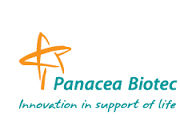预约演示
更新于:2025-05-07
poliomyelitis due to poliovirus type III
III型脊髓灰质炎
更新于:2025-05-07
基本信息
别名 poliomyelitis due to poliovirus type III、poliomyelitis due to poliovirus type III (diagnosis) |
简介- |
关联
2
项与 III型脊髓灰质炎 相关的药物靶点- |
作用机制 免疫刺激剂 |
在研机构 |
原研机构 |
非在研适应症- |
最高研发阶段批准上市 |
首次获批国家/地区 中国 |
首次获批日期2018-10-29 |
靶点- |
作用机制 免疫刺激剂 |
在研适应症 |
非在研适应症- |
最高研发阶段批准上市 |
首次获批国家/地区- |
首次获批日期1800-01-20 |
2
项与 III型脊髓灰质炎 相关的临床试验CTR20160169
随机、盲法、平行对照试验评价双价脊髓灰质炎减毒活疫苗(人二倍体细胞)与IPV联合序贯免疫临床试验
主要目标:比较2剂cIPV/sIPV+1剂tOPV(液体剂型/糖丸)与2剂cIPV/sIPV+1剂bOPV(液体剂型/糖丸)序贯接种后Ⅰ、Ⅱ、Ⅲ型脊髓灰质炎抗体阳转率和抗体水平。 次要目标:(1)比较1剂cIPV/sIPV+2剂tOPV(液体剂型/糖丸)与2剂cIPV/sIPV+1剂bOPV(液体剂型/糖丸)序贯接种后Ⅰ、Ⅱ、Ⅲ型脊髓灰质炎抗体阳转率和抗体水平。(2)评价bOPV(液体剂型/糖丸)疫苗的安全性。
开始日期2015-09-15 |
申办/合作机构 |
CTR20160167
随机、盲法、平行对照试验评价双价脊髓灰质炎减毒活疫苗(人二倍体细胞)与IPV联合序贯免疫临床试验
主要目标:比较2剂cIPV/sIPV+1剂tOPV(液体剂型/糖丸)与2剂cIPV/sIPV+1剂bOPV(液体剂型/糖丸)序贯接种后Ⅰ、Ⅱ、Ⅲ型脊髓灰质炎抗体阳转率和抗体水平。 次要目标:(1)比较1剂cIPV/sIPV+2剂tOPV(液体剂型/糖丸)与2剂cIPV/sIPV+1剂bOPV(液体剂型/糖丸)序贯接种后Ⅰ、Ⅱ、Ⅲ型脊髓灰质炎抗体阳转率和抗体水平。(2)评价bOPV(液体剂型/糖丸)疫苗的安全性。
开始日期2015-09-15 |
申办/合作机构 |
100 项与 III型脊髓灰质炎 相关的临床结果
登录后查看更多信息
100 项与 III型脊髓灰质炎 相关的转化医学
登录后查看更多信息
0 项与 III型脊髓灰质炎 相关的专利(医药)
登录后查看更多信息
2
项与 III型脊髓灰质炎 相关的文献(医药)1989-07-01·Journal of the Medical Association of Thailand = Chotmaihet thangphaet
Opsoclonus in mumps and poliovirus type 3 encephalitides: a report of 2 cases.
Article
作者: Limapichat, K ; Ruangkit, C
1956-12-01·Virology3区 · 医学
Studies on variation in virulence of poliomyelitis virus
3区 · 医学
Article
作者: C.P. Li ; W.G. Jahnes
分析
对领域进行一次全面的分析。
登录
或

生物医药百科问答
全新生物医药AI Agent 覆盖科研全链路,让突破性发现快人一步
立即开始免费试用!
智慧芽新药情报库是智慧芽专为生命科学人士构建的基于AI的创新药情报平台,助您全方位提升您的研发与决策效率。
立即开始数据试用!
智慧芽新药库数据也通过智慧芽数据服务平台,以API或者数据包形式对外开放,助您更加充分利用智慧芽新药情报信息。
生物序列数据库
生物药研发创新
免费使用
化学结构数据库
小分子化药研发创新
免费使用

